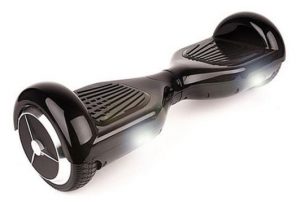Posts Tagged ‘ Defective Products ’
BMW Lawsuit: The Engine that Couldn’t, or Just Won’t?
August 2nd, 2016. By LucyC
 When you hear the three magic letters “BMW “—what comes to mind? A well-engineered, high performance motor car, with a German pedigree and price tag to match—or something like that? Possibly, you think fast, sexy, expensive, fun—and best not to elaborate too wildly on that. I’m willing to bet, however, that the word “clunker” doesn’t come to mind. Nor should it, as BMW enjoys a very good reputation.
When you hear the three magic letters “BMW “—what comes to mind? A well-engineered, high performance motor car, with a German pedigree and price tag to match—or something like that? Possibly, you think fast, sexy, expensive, fun—and best not to elaborate too wildly on that. I’m willing to bet, however, that the word “clunker” doesn’t come to mind. Nor should it, as BMW enjoys a very good reputation.
However, it seems they may be having some issues getting to grips with green technology. A chink in the power cell appeared when a defective automotive class action lawsuit was filed against BMW recently, alleging its electric (your first clue) BMW i3 has a bit of a motivational issue. Specifically, it’s not keen on hills or heavy loads—such as a car full of passengers. (Maybe it’s having an identity crisis—after all, cars full of passengers—heavy loads—isn’t that what Ford minivans are for?)
The BMW lawsuit centers around the BMW i3 “Range Extender” feature. This option, called REx for short, or because it sounds cute, outfits the vehicle with a two-cylinder gasoline engine producing 34 horsepower that switches on when the battery charge depletes to five percent, giving the vehicle another 70 miles of range. BMW claims that the Range Extender “doubles your electric driving range” from the vehicle’s standard 81-mile range.
According to the folks that filed the lawsuit, the reality is a little different. Never would have guessed. In practice, when the gasoline engine kicks in, it doesn’t produce enough power to prevent a dramatic decrease in the vehicle’s performance. As alleged, if the car is under any kind of significant load (such as going up a hill, or loaded with passengers), the speed of the car will dramatically decrease as the battery charge diminishes. Like it’s stamping its feet saying “Nope, can’t make me…” The little engine that won’t.
According to the complaint, this alleged defect can result in the car slowing to speeds of 45 miles per hour on the freeway, without warning. This sudden and unexpected loss of power in a motor vehicle can result in a catastrophic situation for all those on the road, the plaintiffs assert.
Oh yes, that is dangerous indeed, not to mention very bad for the ego. There you are, burning up the highway as if you’re on the AutoBahn when suddenly you find yourself almost in reverse. People are driving by pointing you out to their kids, and not in a good way, before they leave you in their dust. Nope, not pretty—and that’s your best case scenario.
And what about this range of 81 miles, which would, presumably, get you to an exit safely on most freeways. If you’re only tearing up the neighborhood side streets or your local shopping mall—then possibly not such a massive loss of face. That said, let’s call a spade a spade—81 miles is not great. I’m assuming, that means the vehicle requires charging every 80 miles or so. But then again, these vehicles don’t spew out carbon dioxide—so that is the trade off—at least when they are in electric mode.
Admittedly, images of Fred Flintstone and the Modern Stone age Family (cue the music!) hoofing it down the highway do come to mind in this unfortunate scenario. But wait—maybe that’s an option? Fit a treadmill to the footwells and get a workout while you drive? Load the car with passengers and suddenly you’re doing 60 mph! Ok—don’t laugh—it may just have legs (bad pun, I know), but likely not worth holding your breath for.
The plaintiffs who filed the defective automotive suit against BMW are looking to have the vehicles redesigned and repaired at BMW’s expense, and to halt the sale of all i3 vehicles until repairs can be made. The claim also seeks compensation for all the owners of the vehicles, who were not told of the serious safety defect. Who was told of the defect? I can’t imagine a car dealership ponying up on that one.
Alas, it looks like it’s back to the minivan…but one can dream… including BMW.
Hoverboard Fire Hazard Recall by 10 Companies
July 13th, 2016. By LucyC

(source: CPSC)
Hoverboards—the tech fad of 2015—are crashing big time this week with a massive recall by 10 manufacturers. It seems that the “self-balancing scooters” as they’re also known, ain’t so safe. While intuitively, you might think—duh!—the problem is not what you might expect.
Apparently, there have been at least 99 incidents of the lithium-ion battery packs in self-balancing scooters/hoverboards overheating, sparking, smoking, catching fire and/or exploding including reports of burn injuries and property damage, according to the Consumer Product Safety Commission (CPSC). Now that does sound exciting. Certainly would liven up your walk around the park. Who said exercise is boring?
You can imagine it—there you are boogying down the street on one of these things—and suddenly you’re scooter is putting on a pyrotechnics display—complete with smoke and sparks. There’s fire at your feet! Onlookers might even think you’re making some uber hip video and start applauding. If you’re on one of these things in traffic, you could really be in trouble. Not to mention the onlooker distracted driving you’d cause—or worse.
The recall, by the way, is massive—something like 501,000 of these things are involved. And they’re not cheap to buy. The recalled scooter boards involved in the recall were sold at mass merchandisers nationwide and online retailers from June 2015 through May 2016 for between $350 and $900. But there are models that go for north of $1000. That’s a lot of cabs, or gym memberships…
Doing a bit of investigating into this toy, it seems that hoverboards are banned from roads and sidewalks in cities around the world. And—airlines and airports. OMG. Don’t even want to imagine that scenario. New York State has made it illegal to ride one on public roads or walkways, as have Australia and the United Kingdom, and many schools (including UCLA), malls and other public places are also jumping on the banning bandwagon.
According to a story on CNET, “retailers such as Amazon and Overstock are stopping sales of some models or even telling consumers to trash ones they’ve already received.”
So, does this mean it’s back to the gym afterall? There’s likely no meaningful exercise—physical exercise—to be had with one of these things. And in fact they don’t hover—so forget any “Back to the Future” fantasies. These boards have two wheels—one on each end—like a horizontal skate board. You’re not required to move the thing along yourself. Just control and steer it with your legs and body. That’s all (ha!) So hop on and, well, catch fire. Wonder if you can get life insurance for riding one of these things…
Apparently they do take some getting used to—a rider needs to learn to balance on them using the two pressure-sensitive footpads that control speed and steering. So no drinking and driving with this baby and definitely NOT something you want to take to a party… or have your teenager take to a party. FYI—these things can do up to 10 MPH—3x average walking speed, so it’s best to kill the Pokemon Go while hoverboarding as well.
CNET also reports that Hoverboards have minimum and maximum weight limits, which are meant to protect the rider and scooter. “Most boards also won’t operate going up or down steep hills, usually over 30 degrees. There are no height limits associated with the boards, though keep in mind that most lift you about four inches above the ground. If you’re particularly tall, you’ll run a greater risk of hitting your head while riding.” Sounds great.
So enter the safety gear—yes—you knew there had to be a merchandising opportunity lurking here somewhere…helmets, knee pads, elbow pads and wrist guards—but nothing that would presumably protect you in a meaningful way from an explosion or fire. Maybe a hazmat suit? Maaaybe not. It does, however, paint a pretty laughable picture—suited up like Michelin man, wobbling uncontrollably as you lurch down the street with sparks and smoke emanating from your feet. It’s a Snapchat moment waiting to happen. The next YouTube sensation, if only for a half day. Yup—a great recreational device—for the onlooker not the rider. (I’m reminded of the Darwin Awards).
All in all, the whole thing sounds way too stressful. One would need anti-anxiety drugs just to get on the thing. Never mind taking it out—actually riding it in public. Anywhere, day or night—preferably never.
You can check out the full hoverboard recall here.
Time for a walk. On the ground—in runners. Oh yeah baby. There’s a lot to be said for doin’ it old school.
Snowblower Recalls, Just in time for Summer
May 12th, 2016. By Admin
 Here’s a question—what do you do when your snow blower catches fire? Who knew they could? It’s minus 20 outside, and you’re out there clearing an apocalyptic snow fall from your driveway and bammo! —up the thing goes in flames. From snow blower to barbeque—just like that. I’m betting that would improve a person’s circulation pretty fast.
Here’s a question—what do you do when your snow blower catches fire? Who knew they could? It’s minus 20 outside, and you’re out there clearing an apocalyptic snow fall from your driveway and bammo! —up the thing goes in flames. From snow blower to barbeque—just like that. I’m betting that would improve a person’s circulation pretty fast.
Seems crazy right? But a quick scan on the US Consumer Product Safety Commission (CPSC) website reveals that spontaneous combustion (ok—that’s a little melodramatic perhaps) isn’t such an uncommon trait among these devices, begging the question—has anyone bothered to test their design?
The most recent recall for snow blowers that can overheat, “posing a fire and burn hazard,” as the CSPC puts it, is Ryobi Brushless Snow Blowers. (Yes—brushless. Don’t ask.)
On April 26th—just a little late in the season guys—a recall notice was posted for these things in the US and the great white north just across the border (Canada).
The description on the CPSC website states that One World Technologies (there’s your first clue) had posted an important safety notice on its website. They were recalling 300 of these things in the US and some 370 in Canada.
Short of experiencing the pyrotechnics first hand, how are you supposed to know if you have a defective “Ryobi 40-Volt Brushless Snow Blower”? There should be model number information on the back of the blower–and you’re looking for model numbers RY40802, RY40802A and RY40822.
The CPSC blurb continues: “One World has received two reports of snow blowers overheating during or immediately after use. Of the two reports, one consumer reported seeing flames which were immediately extinguished. No injuries or property damage have been reported.” Well, that’s a relief.
The recommended course of action to avoid possibly injury or property damage? “Consumers should immediately stop using the recalled snow blowers…(if the thing caught fire I would imagine it would have stopped working of its own accord) and return them to One World Technologies for a full refund.” Of course, if you can’t get out of your driveway because you haven’t been able to clear a path because your snow blower caught fire, well…at least summer’s on the way.
The good news is you only have to travel to you nearest Home Depot, and get in line with dozens of other people, who may be returning other defective snow blowers. Here’s a list of “related recalls” as posted on the CSPS website, just in case you missed them
All (not just some, so don’t worry if you threw the packaging out) Power America Snow Throwers
Briggs & Stratton Ariens Compact Snow Blowers, Due to Fire Hazard
Toro Power Clear Snowblowers and Recycler Mowers, Due to Fire or Burn Hazard (they’ve got both seasons covered)
American Honda Snowblowers, Due to Fire Hazard
Snow Blowers by The Toro Company, Due to Fire Hazard
Sno-Tek Snow Blowers by Liquid Combustion Technology, Due to Laceration Hazard
Love this one – “Snow Throwers by Ariens Company Due to Injury Hazard.” Yes, “Injury” – leaving their options open, I guess. According to the blurb: “Users trying to clear the collector or discharge chute while the machine is operating could be at risk of a finger or hand injury hazard.” You think?
Who knew that clearing snow could be such a dangerous and adrenalin filled experience. Wonder what grass cutting season will bring?
Recall Notice: Dirty Words for Medical Devices
October 1st, 2010. By Hunter West
 There are people walking around with faulty hip implants. If they can even walk at all. This month DePuy Orthopaedics, a division of the giant Johnson & Johnson family of companies, finally recalled troublesome hip implants after removing them from the market last year. DePuy undertook the latter response amidst a hail of criticism that the metal-on-metal implant featured a flawed design.
There are people walking around with faulty hip implants. If they can even walk at all. This month DePuy Orthopaedics, a division of the giant Johnson & Johnson family of companies, finally recalled troublesome hip implants after removing them from the market last year. DePuy undertook the latter response amidst a hail of criticism that the metal-on-metal implant featured a flawed design.
Okay, so recalls are nothing new. Cars and appliances are recalled all the time. But hip implants, and heart defibrillators are not cars and appliances. They are devices implanted in a patient’s body and not easily resolved.
Who could forget the pacemaker lead from a few years ago that was recalled? The device, which made fans of surgeons who liked the ease and flexibility of the new, thinner leads that proved easier to thread to the heart, was initially hailed as a breakthrough.
And then they started to break. Fracture, really. Hairline fractures. But just enough to affect the performance of the device. Patients who required life-giving shocks to keep their hearts going weren’t getting them; while others were injured or killed when a properly performing heart was suddenly hit with a rogue electric shock because the fractured lead impeded the flow of information from the heart to the pacemaker. Believing the heart to be failing (it wasn’t), the device went into action to re-engage a heart that in reality had not failed—often with tragic consequences.
Which begs the question—why does this keep happening?
Johnson & Johnson has been under siege of late, with a spate of recalls from the DePuy hip, to artificial knee joints, to medication such as Motrin. The company has had to shut down one of its manufacturing facilities due to a departure from GMP (good manufacturing practices), and there have been questions raised about the behemoth company’s oversight. The management and conduct of J&J has been the subject of congressional investigation.
But a larger question remains, and it is one not tied to any one company—but any company Read the rest of this entry »
Archive by Category
- Accidents (24)
- Airlines (9)
- Asbestos Mesothelioma (262)
- Automotive (25)
- Celebrity (14)
- Class Action (84)
- Complaints/Comments (15)
- Consumer Fraud (84)
- Contest (2)
- Court of Public Opinion (5)
- Crazy Sh*t Lawyers See (61)
- Criminal Law (4)
- Defective Products (111)
- DePuy ASR Hip Recall (2)
- Discrimination (22)
- Drugs/Medical (248)
- Elder Care Abuse (4)
- Emerging Issues (462)
- Employment (54)
- Environment (52)
- Financial (28)
- Food Illness (15)
- Human/Civil Rights (4)
- Insecurities (5)
- Insurance (16)
- Intellectual Property (16)
- Internet/E-commerce (19)
- lawsuits (161)
- Lawyers (20)
- Lawyers Giving Back (43)
- Lex Levity (10)
- Personal Injury (106)
- Pleading Ignorance (53)
- Real Estate (2)
- Recall (6)
- Scam (3)
- Securities (13)
- Settlement (81)
- Tort Reform (2)
- Totally Tortelicious (81)
- Veterans (11)
- Whistleblower (9)